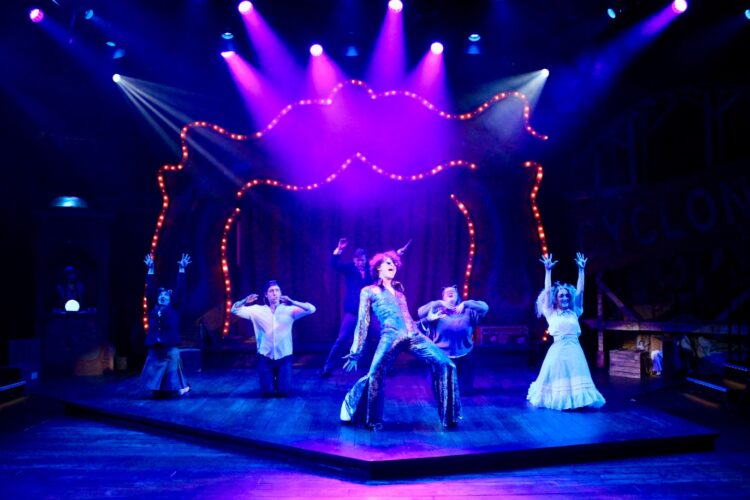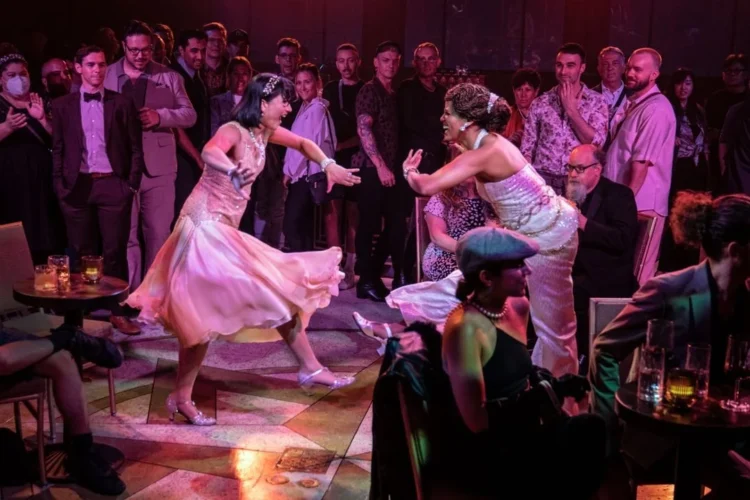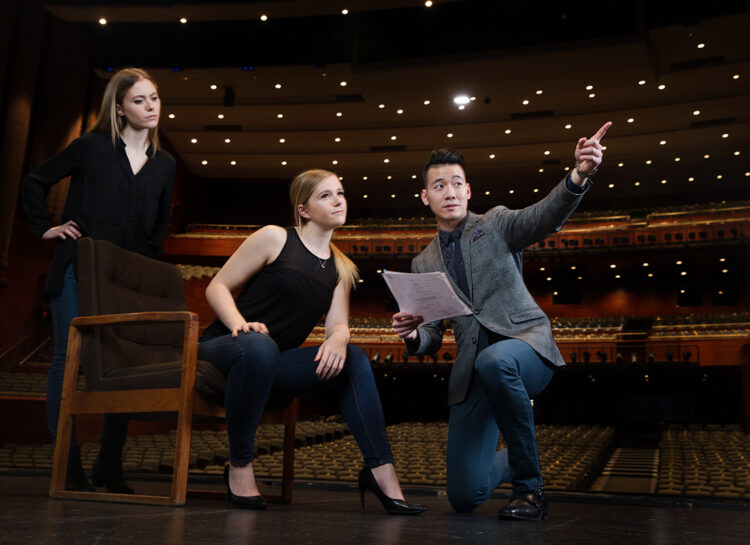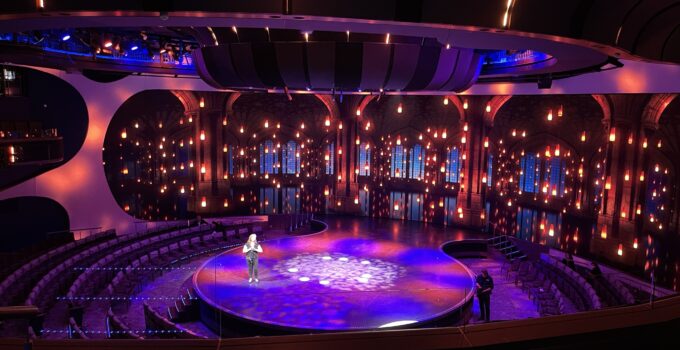Theater is often described as a collaborative art, but nowhere is that collaboration more powerful than in sound and lighting design. These two elements shape the way audiences feel, perceive, and remember a performance.
A single spotlight can isolate a character in anguish, while a carefully timed sound effect can raise the tension in a scene to breaking point.
Without sound and lighting, even the strongest script and acting can feel incomplete.
Page Contents
Key Points
- Sound and lighting design establish atmosphere and emotional tone.
- They guide audience attention to the right moment or character.
- Both contribute to pacing, rhythm, and dramatic impact.
- Innovative technologies have expanded creative possibilities.
- When integrated well, they turn a good performance into an unforgettable theatrical experience.
Setting the Stage: Why Design Matters

Source: theatreappreciation.pressbooks.sunycreate.cloud
Every performance begins before a single line is spoken. The mood set by lighting, the subtle underscoring of music, or even silence can immediately transport the audience into the world of the play. Good design is invisible in the sense that it does not distract but instead amplifies the storytelling.
Lighting designers manipulate intensity, color, and angle to convey everything from the warmth of a summer afternoon to the foreboding chill of a darkened alley. Sound designers weave in music, effects, and ambiance that build aural landscapes, complementing the visuals. Together, they help audiences suspend disbelief and immerse themselves in the story.
Crafting Emotion Through Light
Light is one of the most direct ways to influence perception. A bright wash suggests clarity or innocence, while sharp contrasts between light and shadow can build tension. Theatrical productions rely on these contrasts to communicate mood without words.
Lighting also creates focus. In a crowded scene, a subtle spotlight on one character tells the audience where to look. Changes in lighting rhythm, such as slow fades or sudden blackouts, serve as emotional punctuation, helping scenes breathe or strike abruptly.
Technological advances, like LED fixtures and computer-controlled systems, allow for precise changes and richer palettes. Designers can now shift seamlessly between tones, adjusting color temperatures or adding texture with gobos and projections to mirror psychological states on stage.
Sound as the Invisible Partner
If lighting provides the visual texture, sound adds depth to the emotional register. From the delicate creak of a floorboard to the swell of orchestral scoring, sound carries as much narrative weight as dialogue. It can foreshadow danger, evoke nostalgia, or simply heighten realism.
The layering of sound design is often underestimated. Designers think about frequencies, positioning, and timing so that effects feel natural. For instance, a storm should not just be thunder; it should include distant wind, raindrops hitting surfaces, and even the muffled resonance of indoor spaces.
Sound can also act metaphorically. A recurring motif, like a bell or heartbeat, can symbolize inner turmoil or fate. By repeating it at key intervals, the designer creates subconscious associations in the audience.
Building a Complete Theatrical Experience

Source:pinterest.com
When sound and lighting operate together, the results can be transformative. They synchronize to support dramatic arcs, building crescendos at climactic moments or receding to allow intimate performances to shine.
For those seeking a deeper understanding of how performance elements intertwine, this guide on theatrical experience explores the broader ways audiences connect with drama. Sound and lighting are essential parts of that connection, ensuring that emotion and meaning resonate long after the curtain falls.
Case Study: Subtlety in Action
Consider a minimalist production where sets are bare, and dialogue carries most of the narrative. Without elaborate scenery, lighting and sound must shoulder the responsibility of creating atmosphere. A dim blue wash paired with faint wind sounds instantly suggests a cold outdoor night, while a single warm spotlight and soft guitar strings can transform the same space into a cozy living room.
This flexibility shows how design does not simply decorate but defines the audience’s sense of place. Minimalist theaters often rely on this interplay, trusting that audiences will “see” what is implied by carefully designed cues.
Innovations Shaping Modern Stage Design
Technology has expanded the designer’s toolkit.
- Digital Sound Systems: Multi-channel surround setups allow sound to move across the space, immersing the audience in realistic or dreamlike environments.
- Projection Mapping: Used alongside lighting, projections can simulate entire landscapes or abstract visuals that react to live performance.
- Programmable LEDs: These lights can shift through thousands of hues instantly, enabling quick scene transitions without traditional gels or filters.
- Interactive Systems: Motion sensors and responsive cues let lighting and sound react to actor movements in real time.
These innovations highlight how design is no longer a static craft but an evolving discipline that responds to technological progress.
Collaboration Between Designers and Directors

Source: alis.alberta.ca
The best results happen when designers and directors collaborate early. Directors articulate vision and emotional goals, while designers translate them into sensory layers. Conversations about symbolism, pacing, and audience reaction guide design decisions.
Collaboration also helps avoid the common pitfall of overdesign. Too many effects can overwhelm the audience. Striking the right balance ensures design enhances rather than distracts.
The Audience’s Unconscious Role
One of the most fascinating aspects of design is how much it works subconsciously. Audiences rarely leave a theater saying, “The blue lighting in Act II made me feel uneasy,” but that is exactly what happened. Sound and lighting bypass rational thought and tap into instinctual reactions.
This subconscious layer of storytelling is why performances feel emotionally resonant. Viewers might not recall every detail of dialogue, but they remember how the performance made them feel. That memory is often shaped by the sensory world created around the actors.
Conclusion: Where Art Meets Technology
Sound and lighting design are the silent storytellers of theater. They breathe life into scripts, sharpen performances, and guide audiences through emotional journeys.
As technology evolves, these tools will only grow more versatile, but their core function remains timeless: to shape experiences that words and actions alone cannot achieve.
In the end, great design ensures that a performance is not just seen or heard but felt. That feeling, carried out of the theater and into memory, is the true transformation that sound and lighting achieve.




